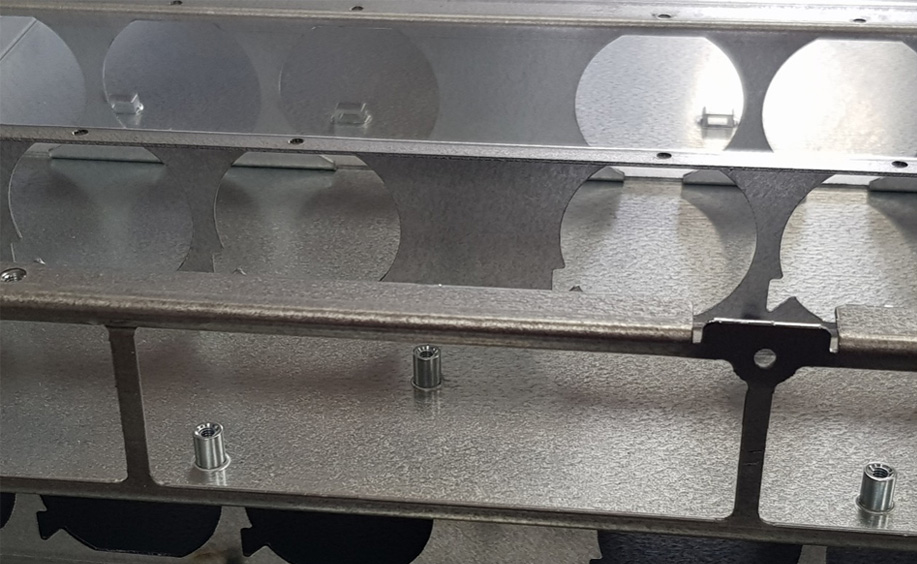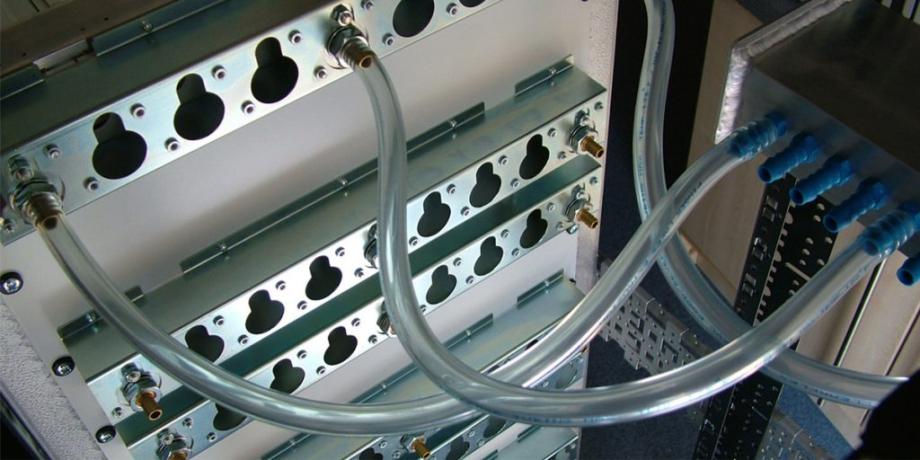The building of concept models, Proof-of-Principle (POP) models, working prototypes and the construction of the odd development rig is and always will be an intrinsic part of the development process. We therefore have always had an established group of manufacturers from whom we procure bespoke made parts such as precision machined components and sheet-metal fabrications.
The widely accepted timescales to make fabricated items is 4-6 weeks at best, with parts requiring plating and / or painting being at the upper end of this range due to the sequential nature of the processes.
When working with steel fabrications, plating with Zinc & Clear passivate is frequently used to provide (light) corrosion protection of parts used indoors. The finish is also frequently used as a pre-treatment for painting of equipment requiring superior corrosion protection as it provides an excellent key for the paint as well as providing secondary protection if the paint layer is damaged.
The plating process necessitates the use of hazardous materials and specialist equipment, so most manufacturers “sub” this process out. Painting, on the other hand, is more commonly performed in-house by fabricators using their own paint lines.
The use of inserts
Sheet metal inserts provide the designer with numerous options for captive features such as male & female threads, spacers, pilot pins, floating nuts, cable tie anchorage points and more. They are cost-effective for what they do and so their use is commonplace. Most traditional fabricators have experience of using inserts and will likely have the necessary tooling.
Inserts come in a range of different materials and finishes to ensure compatibility with the materials & finish of the parent part, so it is important that inserts of the correct material and finish are specified.
One issue is that fabrications already containing inserts such as captive nuts and stand-offs cannot go through the plating baths for reasons of material compatibility and of fluid entrapment. The accepted practice therefore is for sheet metal to be profiled and formed, then sent out for plating before being brought back to the fabricator to have inserts added and then finally painted and screen printed if required.
This third-party interaction requires some organization and management, so attracting some additional cost. When the goods are returned, they need to be scheduled back-in to the manufacturing work-flow, but the timing is dependent on the plater and outside the control of the fabricator. It is therefore unlikely that fabricators can offer an expedited service when plating is specified.

Saving time and money
The use of a pre-plated material such as steel plated or dipped with zinc avoids the additional external plating process, allowing the fabricators to manufacture in-house from beginning to end. The material can be lasered or punched as with traditional steel, but the parent metal is exposed along any cut edge. These unprotected edges will corrode if exposed to unfavourable conditions, but the levels are quite acceptable when the equipment is stored and used indoors. The cost-effectiveness of pre-plated materials such as Zintec has made it the go-to material for equipment such as that used for computing, switching, storage and other electronic systems.
For applications such as these, building fabrications from pre-plated material is an attractive option as it saves both time and money. For the fastest possible manufacturing times couple the use of pre-plated material with services provided by laser profiling companies.


